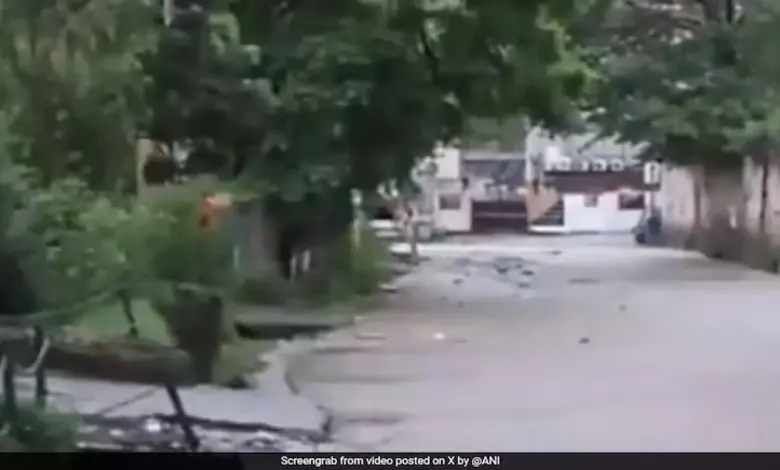Monsoon Mayhem: Flood-Like Conditions Prompt School Closures in Jammu and Kashmir

Heavy rainfall has inundated parts of Jammu and Kashmir, creating flood-like conditions across multiple areas, according to officials cited. As a precautionary measure, the local administration has shut down all schools in the region on Tuesday, July 22, 2025.
A significant landslide, triggered by the relentless downpour, has blocked the Jammu-Rajouri-Poonch highway, severely disrupting connectivity. Persistent rain has led to widespread waterlogging, particularly in low-lying areas, causing significant disruptions to daily life. Authorities have issued an advisory for the Jammu region, urging residents to stay vigilant, exercise caution, and avoid areas prone to landslides, with forecasts predicting heavy rainfall for the next 72 hours.
The past 24 hours have seen intense rainfall across the Jammu region, resulting in tragic incidents. In Katra, a landslide on the old Vaishno Devi track claimed the life of a pilgrim, while in Poonch, a massive landslide struck a government school in Bainch Kalsan village, killing one student and injuring four others. Additionally, a senior police officer sustained injuries when a rock fell on his vehicle near Jammu.
ALSO READ : Pakistan Wanted To Trigger Riots And Disrupt Tourism In Jammu And Kashmir : PM Narendra Modi
In Poonch, multiple landslides have compounded the challenges, while flash floods have been reported in several parts of Rajouri. Authorities have advised residents to avoid vulnerable areas to minimize risks. Meanwhile, the Border Roads Organisation (BRO) is actively working to mitigate waterlogging in the Pir Panjal region of Rajouri. Sanjay Sharma, a BRO engineer, told that efforts are underway to construct concrete pavements in market areas like Kotranka, Samote, and Budhal to improve drainage and connectivity. “The drains in the market were often clogged, leading to water overflow on roads,” Sharma explained, emphasizing ongoing efforts to enhance road safety and infrastructure resilience.
